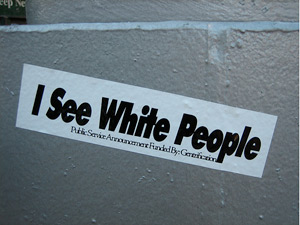Gentrification is a fairly important social construct, although admittedly probably a bunch of people overuse the word in the modern world. If you’ve never heard of it, first remove the rock above your body, and then read this: it’s basically when urban communities shift away from their core tenets and towards a wealthier tenet. If you want to be crass about it, it’s typically when minority populations (African-American/Hispanic) start getting forced out of their areas of a city so that white yuppies/hipsters can come in and bring cool craft beer bars and supermarkets. Obviously, that’s a generalization.
The New York Times is, by some measure, the most important newspaper in America. (You can easily argue that, but probably more people believe that than don’t believe that.)
Gentrification is a major social issue. It’s re-shaping cities, and cities are where more and more people are moving. The New York Times is a pre-eminent trend-spotting newspaper.
And yet, it may have absolutely no idea exactly what gentrification is.
Follow the bouncing ball:
- Here’s a new paper on “strategies for identifying gentrification.” Here’s a summary of said paper.
- Here’s one classic (quantitative) study on gentrification, focusing on median home price.
- Here’s a second classic study, focusing on changes in income, education, and housing.
- If you look at all neighborhoods that The New York Times called “gentrified” between 1980 and 2009, how does it match up with neighborhoods that were actually gentrified per one of those two studies?
Here’s how:
From 1980 to 1990, the Times under-ID’ed the Freeman study (No. 2) and over-ID’ed the Bostic/Martin study (No. 1). From 1990-2000, it under-ID’ed both. And from 2000-2005/2009, it under-ID’ed both as well.
From 1990 to 2000, especially, the Times‘ numbers are way lower than both studies. Since the biggest gap always seems to be with Freeman, look at this map:
If you overlay this with a map of New York, you can start to see the base issues here.
As CityLab explains:
What jumps out here are the large swathes of the city in which significant neighborhood change goes ignored by the Times. The Grey Lady was much more likely to peg gentrification in “hip” neighborhoods in Manhattan and adjacent parts of Brooklyn (like Williamsburg) than in the Bronx and Queens, particularly in the 1990s and 2000s. Generally speaking, the gentrifying neighborhoods discussed in the Times lined up more neatly with the more restrictive method used by Bostic and Martin than it did with Freeman. Still, as Barton writes, “the association of both census-based strategies with the New York Times were moderate at best.”
So basically, The New York Times seems to be assigning gentrification mostly to “hip” neighborhoods — where, ironically, gentrification will lead to young parents who then read the Times — and that all brings to mind Brian Williams’ classic rant on the Times a few years back:
There’s a flip side argument made in the CityLab article, which should be mentioned:
- 75 percent of neighborhoods that were high-poverty in the 1970s were still high-poverty in the early 2010s.
- 40 percent of the top 55 U.S. population cities didn’t see gentrification in the 2000s.
- There are 3.2 million Americans in poverty living in areas that weren’t in poverty in the 1970s.
Add all that up, and you have a slightly different picture. Maybe gentrification isn’t the problem — maybe the problem is actually high-impact, highly-persistent poverty (and/or growing poverty). Gentrification, by default, tends to really impact cities where people want to live, or are flocking to. That’s not all cities, by any stretch.
Acute, high-poverty areas may have tripled between 1970 and 2010. That’s a much bigger contextual issue than gentrification in the same span, I’d argue.
Plus: lower-income residents tend to cluster together in some cities (as do more affluent residents), which can exacerbate the problem.


